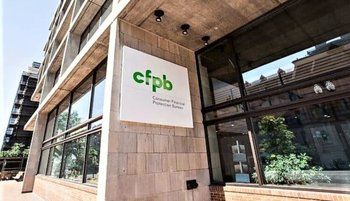Over a recent six-month period, mortgage rates crept up more than a half percentage point. But are higher mortgage rates really so terrible? Is there a silver lining or two?
Here are four benefits and four concerns about rising mortgage rates.
The good
1. Rising rates are often a sign of an improving economy
Rising interest rates are, according to many experts, a sign of the ongoing national economic recovery.
Increases in mortgage interest rates suggest that consumer confidence is rebounding and that rising incomes and firming labor market will help to promote inflation over time. Higher mortgage rates are also as sign that uncertainty is lifting among investors who perceive that the economy is getting better, so they feel more comfortable pulling money out of the safe haven of bonds and shifting cash to riskier investments, like stocks. In turn, this presses yields (and mortgage rates) upward. As well, by raising short-term interest rates, the Fed is also expressing confidence that the economy can grow without emergency-level stimulus, and is even forming plans to reduce its holdings of Treasury Bonds and Mortgage-Backed Securities in order to "normalize" monetary policy.
"Higher rates mean the economy is doing better, which is good for housing prices," says John Walsh, president and founder of Total Mortgage in Milford, Conn.
2. The return of purchase mortgages
Higher mortgage rates have caused refinance activity to dry up, resulting in more competition for home-buyer business, improved service and even relaxed lending standards.
Two of the most important lending standards have already begun to ease, says Walsh. Loan-to-value ratios have already responded a bit and debt-to-income ratios are a little more flexible now than they were.
"Efforts by lenders to get more mortgage business is positive and there's even more interest in jumbo loans," says Walsh.
3. Today's rates are still historically low
When all is said and done, today's current mortgage rates are still historically low and the rate increases to date have not significantly hurt affordability.
"The real question is not what effect rising mortgage rates will have on the housing recovery, there's sure to be an impact, but will it be enough to stall the recovery? We don't think so. Demand is strong, supply is limited, and for most families in most markets, housing affordability is still strong," says Frank Nothaft, chief economist at Freddie Mac in Washington, D.C.
4. Increased sales
Higher rates coupled with rising prices will push buyers "off the fence," resulting in increased sales, says Bernice Ross, founder and CEO of RealEstateCoach.com in Austin.
An increase of 25 basis points on a 30-year fixed loan at today's prices could cost borrowers thousands over the life of the loan, says Ross. "Coupled with today's rising prices, [higher] rates will highly motivate buyers to jump on the bandwagon."
The bad
1. Increased costs
"Quite simply, higher rates make home ownership more expensive," says Will Stein, a real estate broker at Bel Air Realty in Bel Air, Md. "Buyers pay more for less of a home, and higher rates price some buyers out of the market altogether."
According to Freddie Mac, 30-year conforming mortgage rates have risen from about 3.5 percent in September 2016 to over 4 percent in April 2017. That interest rate rise adds about $68 a month on a $200,000 mortgage. Rate increases to date combined with the 12 percent rise in home prices over the past 12 months mean that mortgage payments have gone up by about 25 percent for a typical homebuyer. Conversely, a borrower whose income could have covered a $200,000 mortgage at 3.5 percent can now only borrow about $186,000, a 7 percent drop in affordability.
2. Deterring home ownership
Low interest rates do more than low home prices to keep affordability in place for homebuyers. According to the State of the Nation's Housing 2013 report by Harvard University, home price gains in 2012 did little to damage affordability, thanks to consistently lower interest rates during the year.
3. Higher rates could threaten the housing recovery
"The rate increases since last year are a tough pill to swallow for someone buying a home who has to settle for having $20,000 or $30,000 less to buy a home than he would have if he had bought before April," says Walsh. "Some people aren't going to be able to buy a home where they could have before. These are going to impact the housing recovery, which isn't as strong as many think."
4. Fewer refinances
Even though the mortgage and real estate crisis continues to fade into the rear-view mirror, there are yet several million homeowners still underwater and unable to refinance. Rising mortgage rates over time will continue to diminish the pool of qualified borrowers who can refinance at an attractive rate.
As the economy improves, look for the housing recovery to continue despite higher rates. In years past, strong housing economies have thrived with rates even two to three times higher than they are today.



